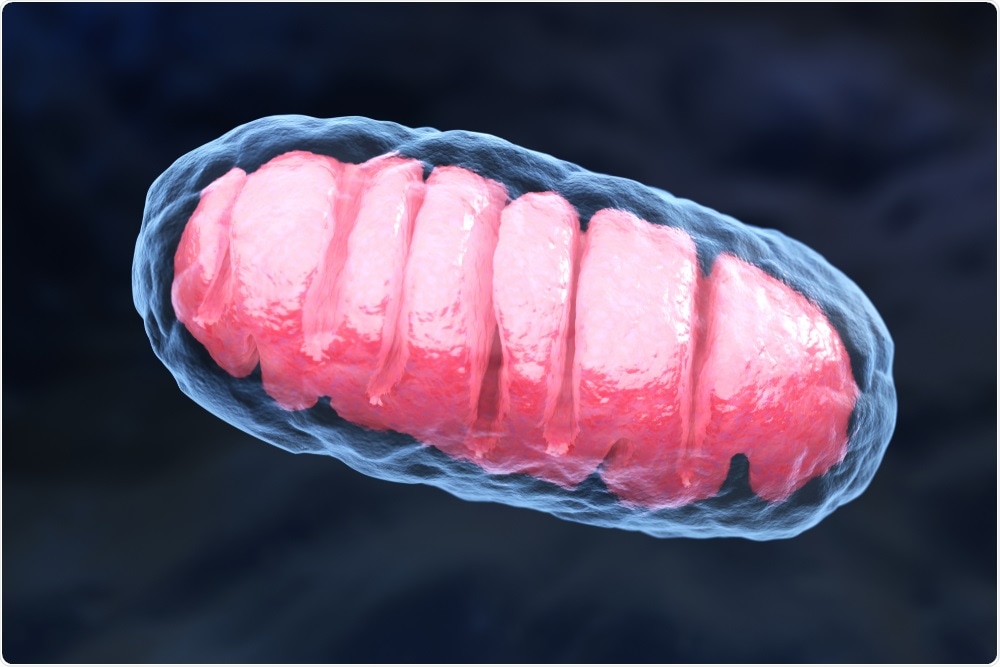Researchers at UCSD have discovered a potential new way to treat chronic inflammatory diseases, by eliminating damaged mitochondria before they trigger excessive inflammation. The paper “Choline Uptake and Metabolism Modulate Macrophage IL-1β and IL-18 Production,” was published on 11th April 2019 in the journal Cell Metabolism.
 Tatiana Shepeleva | Shutterstock
Tatiana Shepeleva | Shutterstock
Using mouse models, the researchers found that removing damaged mitochondria prevented the acute inflammation seen in diseases such as gout, as well as the chronic inflammation seen in the genetic disease Muckle-Well Syndrome.
Inflammation is a protective process that the body uses to remove invading organisms or irritants, but too much inflammation can damage healthy cells and contribute to chronic diseases.
To help maintain balanced inflammation, cells of the immune system employ a multiprotein oligomer called the NLRP3 inflammasome. This molecular machinery is inactive or “switched off” when cells are healthy, but becomes activated once mitochondria are harmed by stress or bacterial toxins.
However, sometimes NLRP3 stays “switched on,” which can cause the excess inflammation seen in chronic inflammatory diseases such as osteoarthritis, gout and Alzheimer’s.
Now, Michael Karin and colleagues have potentially found a way to alleviate this inflammation by eliminating damaged mitochondria before NLRP3 has a chance to become activated.
In another recent study by Karin’s team, the researchers discovered that NLRP3 is de-activated when damaged mitochondria are eliminated by a cellular recycling process called mitophagy.
This made them wonder whether it would be possible to reduce excessive inflammation by deliberately inducing mitophagy so that damaged mitochondria are removed before NLRP3 becomes activated.
At the time, colleague Elsa Sanchez-Lopez had been studying how macrophages control their uptake of a critical nutrient called choline when she discovered that an inhibitor of the enzyme choline kinase (ChoK) could induce mitophagy.
ChoK inhibition stopped choline being incorporated into mitochondrial membranes and the organelles were no longer flagged up as damaged or in need of clearance through mitophagy.
"Most importantly, by getting rid of damaged mitochondria with ChoK inhibitors, we were finally able to inhibit NLRP3 inflammasome activation," says Karin.
To test whether NLRP3 could be controlled in a living system, the researchers decided to test the approach in mice.
As reported in the journal Cell Metabolism, the team reports that administration of ChoK inhibitors prevented the inflammation caused by uric acid – the substance that triggers gout when it forms crystals in the joints.
Furthermore, treatment with ChoK inhibitors reversed chronic inflammation in a mouse model of Muckle-Well Syndrome, as measured by normalization of the animals’ spleen size.
NLRP3 exerts its inflammatory effects by inducing the release of two potent cytokines: interleukin (IL)-1β and IL-18. According to Karin, drugs capable of blocking (IL)-1β do currently exist, although they do not block IL-18.
ChoK inhibitors, on the other hand, can block both cytokines, according to the current study. The research could have important implications for patients with lupus and osteoarthritis, say the authors:
There are several diseases, including lupus and osteoarthritis, whose treatment will likely require dual inhibition of both IL-1β and IL-18."
Source
The University of California - San Diego